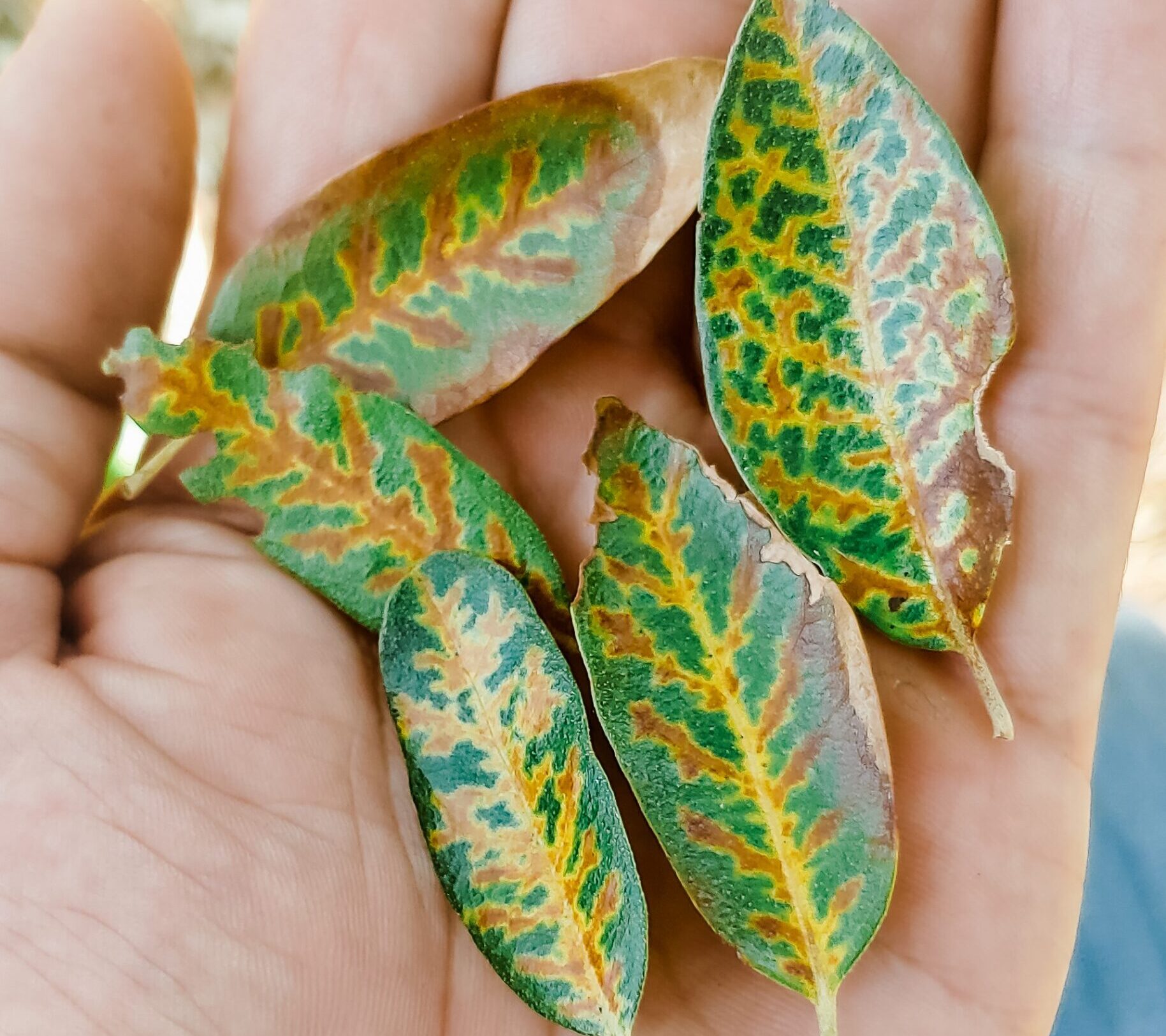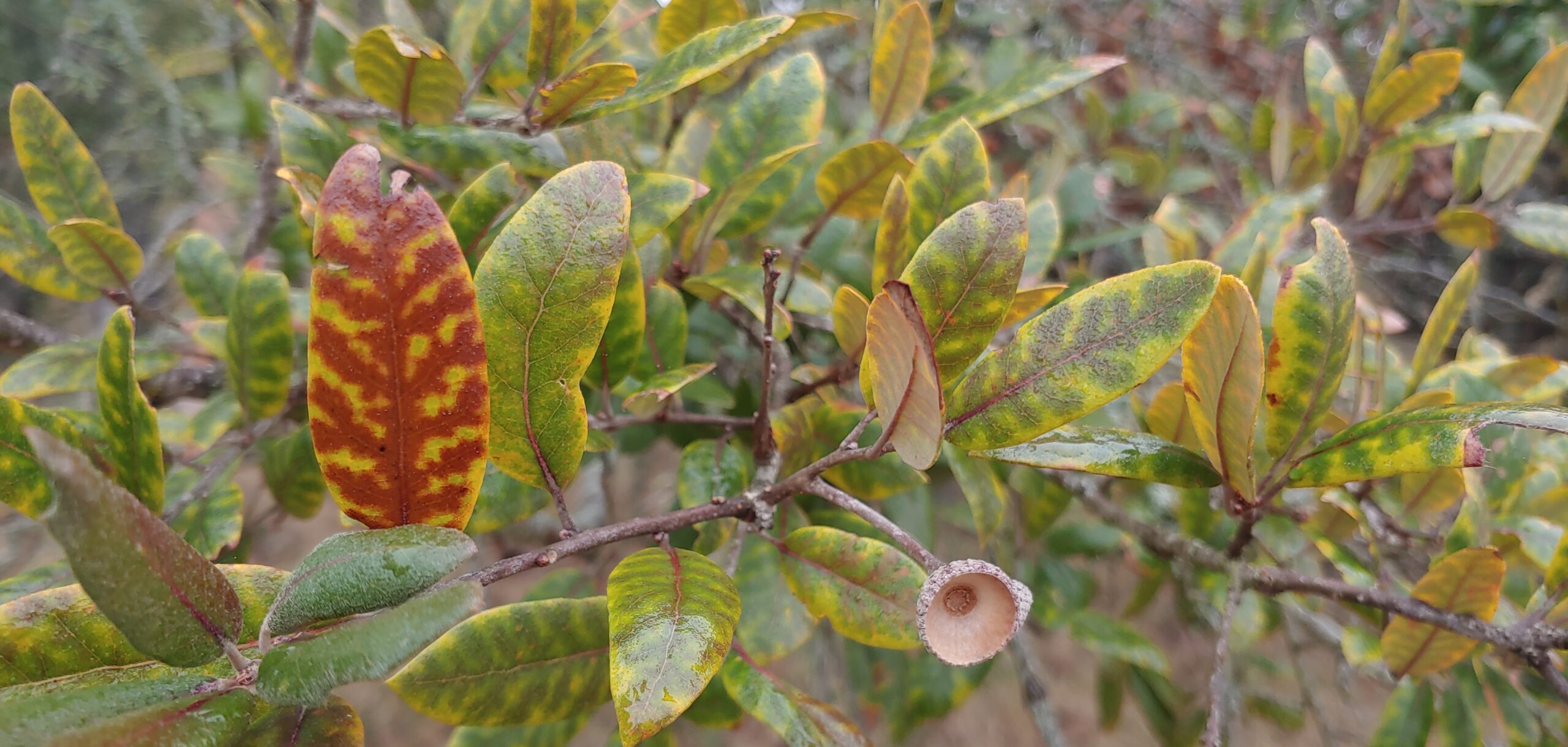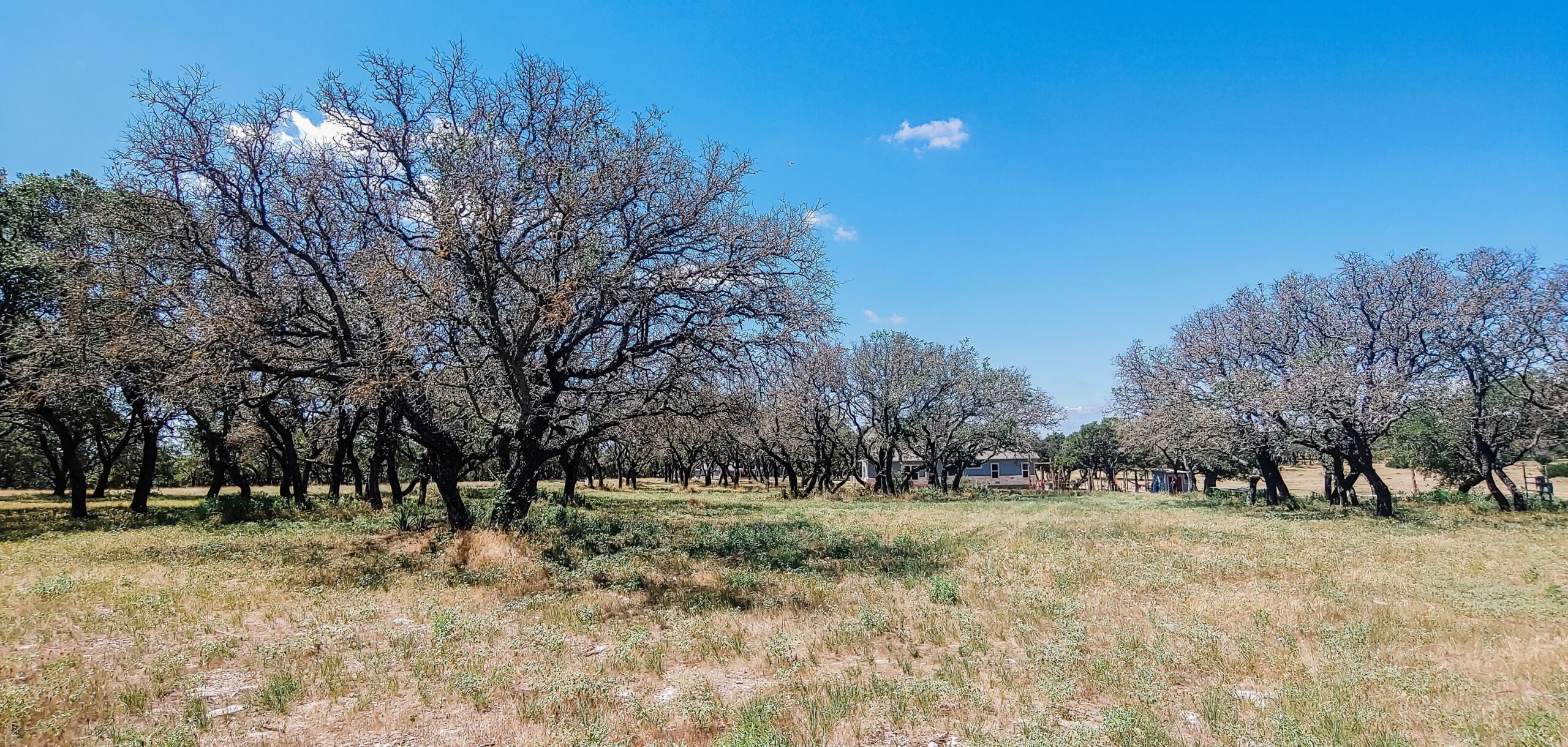Know the signs of oak wilt. Know what to look for and know what to do when you see them. Depending on the type of oak infected you can have a total loss of life in as little as 30 days.
Live oaks have the most prominent sign of infection with veinal necrosis or veinal banding. Veinal necrosis is the yellowing of the veins in the leaves that eventually turn brown or necrotic and die. Banding is shown when the veins turn a darker green than the rest of the leaf. Tip burn can also be visible with the edges, or margins, of the leaves turning brown with the discoloration moving inward. These symptoms will be visible in the crown as well as on the ground during defoliation soon after the tree is infected.


Once a tree has lost more than 30% of its crown through defoliation it is not recommended to treat with injections as the infection has spread to a point that would greatly limit the success of the treatment. Pay attention to your trees, as well as your neighbor’s trees, for groups of dying or dead trees referred to as an oak wilt center. Live oaks establish root grafts allowing the oak wilt pathogen to spread from infected trees to healthy trees and if not treated can spread up to 100 feet in a year. Noticing the symptoms early will help increase the success rate of therapeutic injections. A quick response will also allow for preventative injection or trenching services to save nearby trees at risk of infection.
Symptoms of oak wilt in red oaks are more difficult to notice and any unusual change in leaf color should be looked into as they are highly susceptible to oak wilt, often dying within 4-6 weeks of infection. In the spring, young leaves can wilt while turning pale green or brown. Mature leaves can flash an autumn look and turn pale green or bronzed before wilting and dying. Red oaks are also the source of fungal mats, found on oak wilt infected trees, that produce spores which can be spread to wounds on healthy trees. These mats can be found under cracks in the bark and exude an odor similar to fermenting fruit. Pay attention to your red oaks and take quick action. Action may include preventative injections for nearby trees or destroying an infected tree to help prevent the spread of the pathogen. Therapeutic injections are not usually suggested for symptomatic trees due to the high mortality rates in infected red oaks.
White oaks tend to be more resilient when faced with oak wilt. Some may show foliar symptoms and exhibit crown loss and defoliation while surviving the infection. Some species have a higher chance of infection through grafting so treating all cases of oak wilt seriously is the best approach.
Again, know the signs of oak wilt and know what to do when you see them. Contact us if you have any questions or concerns regarding the health of oak trees. oakwiltpros.com
– Oak Wilt Pros
Share on FaceBook
Follow us on social media

